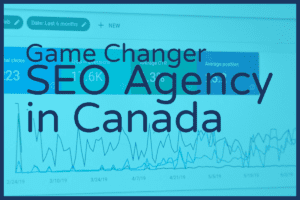 Lead generation is simultaneously the most important duty of a professional services firm and the least desirable action. Working with existing clients is often easier and preferable than finding new clients.
Lead generation is simultaneously the most important duty of a professional services firm and the least desirable action. Working with existing clients is often easier and preferable than finding new clients.
Many websites will offer you the top five tips or the four fastest ways to promote lead generation but today, we plan to focus on just one tip: develop a lead generation plan.
Having a strong lead generation plan is like owning best GPS on the market. Buy a cut-rate GPS and you may end up turning in circles, running into a dead end or getting lost in the woods. Investing in the high end GPS will not only get you from point A to point B, but will probably also do so with new shortcuts and in with less hassle.
Your strong lead generation plan should focus on one goal, achieved through five specific steps.
The Goal
Your ultimate goal for your lead generation plan is not new leads. Your goal is new clients. This is not a new concept. And yet, too many lead generation efforts focus on acquiring as many new leads as possible rather than the leads most likely to become new clients.
Keeping this ultimate goal — new clients — at the center of your plan will help you maintain focus as you develop the five aspects of your plan.
Step 1: Refine your target client profile
This step ties directly back to your goal. To find the leads who will likely turn into clients, you must start by knowing who you want to target. Look back through past clients and determine who was most profitable and easy to work with. What did they have in common?
Also consider what type of client will most benefit from your strengths or clients and sectors where you can add significant value. These characteristics will help you build a target client profile.
Step 2: Research your target client group
Once you have developed a profile, take the time, energy and expend the cost to conduct research. It may seem time-consuming or costly, but going into lead generation without conducting research is like buying that cheap GPS. You have no idea where you might be headed.
Research should include:
- Associations your target client belongs to;
- Who your target clients consider as your competitors;
- Challenges your target client faces;
- Solutions and services your target clients seek out;
- And emerging trends within your field.
Step 3: Identify communication channels
The next step in your lead generation plan is to determine how to deliver your message. Identify a mix of both online and offline communication channels based on your target client profile and your research on your target clients. This could include targeting certain blogs, trade press or the other identified places where your target clients seek out information.
Step 4: Work with strategic lead generation partners
Most professional service firms underutilize potential lead generation partners. Partnering is not synonymous with competition, especially if you target partners offering different and complimentary services. Team up to conduct mutually beneficial research, offer training programs or to publish articles.
Step 5: Offer information in multiple formats
A target client profile helps you form a general plan. Delivery of your message will need to vary according to the actual target clients. Offer your information in multiple formats including:
- White papers;
- Webinars;
- EBooks;
- Videos;
- Research reports;
- Infographics;
- And other formats like articles or traditional ads.
Having your message in various formats allows flexibility in meeting a particular lead’s needs and offering information where that particular lead seeks it out.
The destination, working directly with clients, is always your ultimate goal. But if you focus only on your destination and not the path to get there, you may never arrive. A strategic lead generation plan will keep you on the right path. Set your goal, develop a plan and enjoy the ride.



